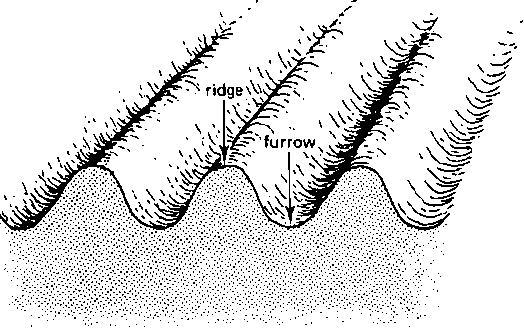Water is an essential element for the growth of the plants. Some plants need more water, some need less water. Though they do not need an equal amount of water, they need an actual proportion that increases their growth. Irrigation processes make it easy to water your plants. Surface Irrigation is one type of irrigation process. Surface Irrigation is also known as Flood Irrigation.
What is Surface Irrigation?
Surface Irrigation is a kind of irrigation where gravity works its best. In Surface Irrigation, water is applied and distributed over the soil surface by the help of gravity. Throughout the world, this is the most commonly used type of irrigation process. Surface Irrigation is an unchanged process and it is older than its recognition. For thousands of years, people are practicing this irrigation process. There is a misconception that, Surface Irrigation process is sometimes considered as Flood Irrigation because of uncontrolled water distribution. But if applied correctly, Surface Irrigation can be your best irrigation process to water your plants.
Types of Surface Irrigation
Do you want to make Surface Irrigation a significant process? If you are worried about the fertility of your land then Surface Irrigation comes with its three types to solve your problem. You can simply manage your water distribution. So there is no need to worry anymore. There are three types of Surface Irrigation: Level Basin Irrigation, furrow irrigation, and Border Strip Irrigation.
Basin Irrigation
For years, Basin Irrigation has been used in small areas that have a level surface. These level surfaces should have to be surrounded by earth banks. Water must be applied to the entire basin. Then it is allowed to be infiltrated. This is a scientific application. Now if you look at the traditional process, once it is irrigated, no water is permitted to drain from the world. You can apply this Basin Irrigation system into soils with low infiltration rate. Fields are typically set up to follow the natural level of the land. But the introduction of laser leveling and land grading create a more appropriate mechanized land. You can also divide your land into a number of rectangular bays and apply Drain Back Level Basin Irrigation method which is basically a kind of basin. This is quite a tricky method. Water is first applied to a bay and when it gets filled, it transfers the excessive water into other bay and thus works. In this process, a combination of drainage water system works. The flow of water can be controlled. In Australia, rice and wheat are grown in rotation using this irrigation process.
Furrow Irrigation

Furrow Irrigation is quite a lengthy and tough type of Surface Irrigation process. It needs a good effort. If it is done properly, then you can get the best harvest, no doubt. To do this irrigation process, you have to create small parallel channels in the direction of the predominant slope. Water slowly falls down the field under the influence of gravity. Though it is first applied to the top end of each furrow it works well. To apply water, you can use gated pipe, siphon, head ditch, bankless system and many more. Slope, surface roughness and furrow shape these are some factors that determine the speed of the water. Inflow rate and soil infiltration play a vital role to determine water speed. Crop species govern the adjacent furrow spacing. Typically space remains between 0.75-2 meter. Crops should always be planted on the ridge. Furrow Irrigation is specially applied for crops such as cotton, maize, sugar-cane. Sometimes in citrus, stone fruits and tomatoes, growth is confirmed using this irrigation process. Places, where water supply is pulsed on and off you, can apply another variant of Furrow Irrigation that is Surge Irrigation. This irrigation process mostly depends on the soil type. It is typically avoided for the little benefit it brings.
Read more about surface irrigation:
Border Irrigation:
Border Irrigation is mostly known as Border Strip, Border Check or Bay Irrigation. This does not fall as a singular kind actually rather it is a combination of Level Basin Irrigation and Furrow Irrigation. In this system, the field is divided into a number of bays or strips. Most importantly, every bay is separated by raised earth check banks. Usually, bays are long and narrow in comparison to Basin Irrigation. Bay dimension is kept between 10-70 m wide and 100-700 m long. Water is usually supplied to the top end of the bay. It is usually used to plant pasture for dairy production.
Surface Irrigation system might look tough from outside, but if you can utilize it properly then it is proven to be the best irrigation process. This is why it has been practiced for more and more years. All you have to do is see to it with the proper material and extra care and effort so that it can be improved gradually. You must look out for crops that will grow best in this process.
How Does Surface Irrigation System Work?
The surface Irrigation system is very easy yet natural. You need to go through only four phases and your process is done. At first, water is supplied to the top end of the fields, it naturally follows to the field length. Now it is the Advance Phase. It depends on the length of time of the water supply. Again, water is supplied to the top end of the fields, it gradually runs off to the pond. Next is the Storage Phase. The period of time in this is between the end of the advance phase and the shut-off phase. Depletion phase is a short period of time when the length of the field is submerged. Last is the Recession phase. It is the time period while the waterfront goes toward the downstream end of the field.
